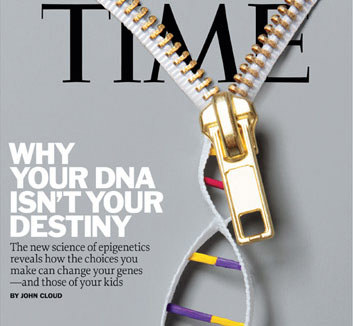Epigenetics
Pieces that are not needed or needed less often are tucked away deep in the cell nucleus. These mechanisms together are called epigenetics. Changes in epigenetic tuning are believed to partly underlie the relationship between early life conditions and health many years later.
Locating pieces of DNA
Our section has set itself the goal of detecting the pieces of DNA that are sensitive to environmental factors early in life and we are trying to understand their role in disease processes. For this we study large cohort studies. One of the best-known studies we do is the epigenetic studies of people who were in the womb during the famine winter, a severe famine at the end of the Second World War. In 2008, our group was the first to demonstrate that short-term prenatal environmental change can lead to lifelong epigenetic changes in humans. DNA methylation, one of the epigenetic tuning mechanisms, was different in people conceived during the famine winter.
…Our section has set itself the goal of detecting the pieces of DNA that are sensitive to environmental factors early in life and we are trying to understand their role in disease processes. For this we study large cohort studies. One of the best-known studies we do is the epigenetic studies of people who were in the womb during the famine winter, a severe famine at the end of the Second World War. In 2008, our group was the first to demonstrate that short-term prenatal environmental change can lead to lifelong epigenetic changes in humans. DNA methylation, one of the epigenetic tuning mechanisms, was different in people conceived during the famine winter.
With many follow-up studies with ‘medium- and high-throughput’ technologies (mass spectrometry and next generation sequencing) we have made it plausible that these kinds of epigenetic changes can form the connection between an adapted prenatal development and the disease risk later in an adult individual.
Development
We are currently conducting several studies on a genome scale, in various large population studies within the LUMC and (inter)nationally. For these studies, we develop bioinformatic methods for the integration of genetic, epigenomic and transcriptomic data and in vitro systems for the functional characterization of identified epigenetic cues. Through this integration, we hope to understand the mechanisms underlying age-related diseases and also discover new clinically relevant predictors of disease risk.
University of the Netherlands
&w=710&h=710)
Projects
Themes for innovation and Societal Outreach
Our Team members
- Bas Heijmans, Professor of Population Epigenomics / Scientific Staff Member
- Laura Franken, Research Technician
- Lucy Sinke, PhD Student
- Nathalie Reilly, PhD Student
- Pia Todtenhaupt, PhD Student
- Yunfeng Liu, PhD Student
- Koen Dekkers, PhD Student
&w=2665)
&w=353)